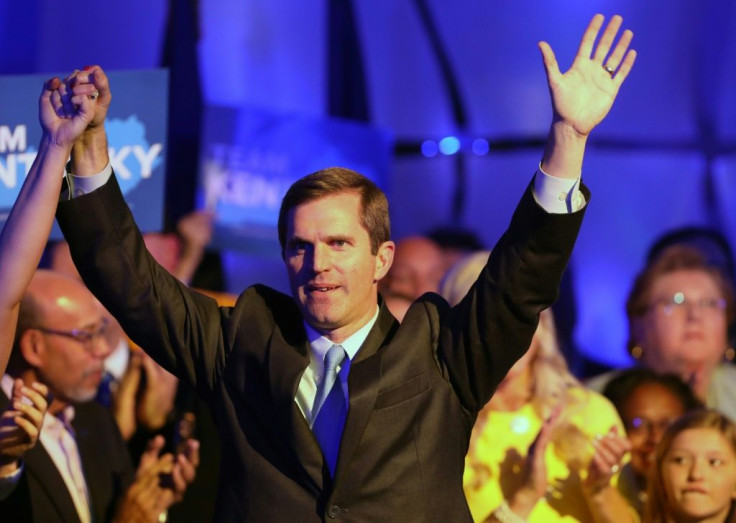Kentucky Coronavirus Cases Surge Following Anti-Lockdown Protests
KEY POINTS
- The spike refers to the 273 new cases that were reported by Gov. Andy Beshear on Sunday
- Given the normal coronavirus incubation period of 10-14 days, it was entirely possible an infected protester was among the 273 new cases
- An actual link tying the protesters to the following spike would support those who fear easing the pandemic prevention measures too early might cause more outbreaks or a second wave of infections to areas hit hard by the initial wave
Recent reports have linked a spike in coronavirus cases in Kentucky to the lockdown protests in the state. The spike refers to the 273 new cases that were reported by Gov. Andy Beshear on Sunday (April 19). The question that some are asking: Are the spike in cases and the protests connected in any way?
A New York Post article from Monday (April 20) stated, “It’s unclear whether the protests had any impact on the surge of deaths….” It also referred to another article in the Lexington Herald Leader (LHL), written April 15, about the protests held outside of the Capitol building in Frankfort, Kentucky, over the closing of non-essential businesses aimed at curbing the spread of COVID-19 coronavirus.
But an April 19 article by the LHL focused on the new cases and only mentioned the protests in the ninth paragraph. It read, “In Kentucky, there have been at least two protests over the restrictions one with more than 100 people and a second follow-up drive through protest,” an indication that any link between the protests held a few days earlier to the spike was not established.
Given the normal coronavirus incubation period of 10-14 days, it was entirely possible an infected protester was among the 273 new cases. Is this considered a link or just a coincidence?
A mere coincidence supported those who were anxious to get the country back to work and avoid further economic calamity. This view was supported by President Donald Trump whose re-election campaign before the pandemic was largely based on a robust and growing economy.
An actual link tying the protesters to the following spike would support those who fear easing the pandemic prevention measures too early might cause more outbreaks or a second wave of infections to areas hit hard by the initial wave. Gov. Beshear, a Democrat, appears to be one of several governors who take this view.
Beshear was quoted in the New York Post article: “We are still in the midst of this fight against a deadly and highly contagious virus. Let’s make sure, as much as we’re looking at those benchmarks and we’re looking at the future, that we are acting in the present and we are doing the things that it takes to protect one another.”
He also referred to the guidelines proposed by the White House saying, “We’re not in the 14 days of decreasing under the White House guidelines to do certain things.” This was referring to a “downward trajectory” to ease restrictions over 14 days in the White House guidelines. He also said he would not budge on easing restrictions over the protests.
Time and the march of the non-partisan coronavirus may or may not unveil links between public gatherings and outbreaks that happen a few days later. Barring a miraculous vaccine or cure, the best path to follow was one that will minimize new cases of COVID-19 and limit the economic fallout so that fiscal recovery will be possible.

© Copyright IBTimes 2024. All rights reserved.





















